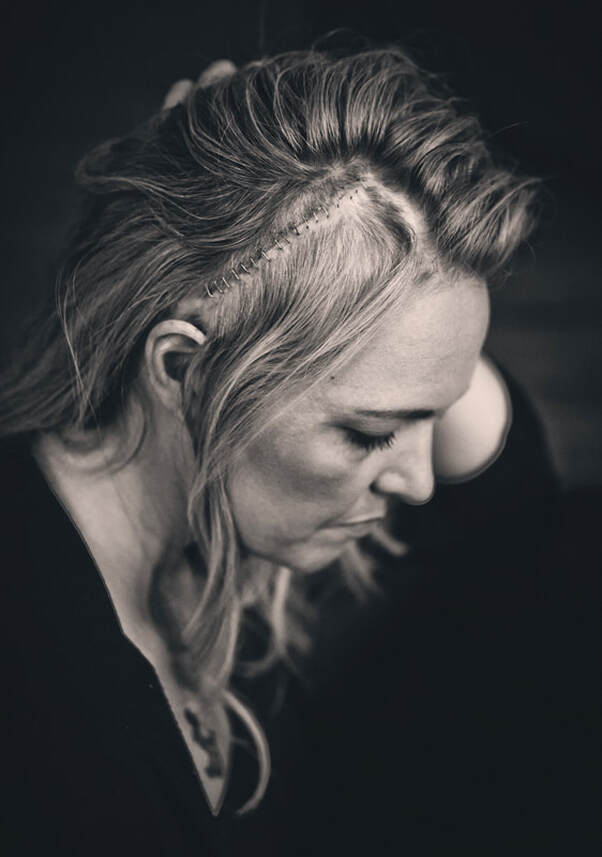 It’s a quiet Sunday afternoon. I’m listening to Jackson Browne and reading back through some journaling I’ve done in the past few months. When I’m sick and having surgeries I definitely find that I write less. Instead, I've made an effort to make short journal entries documenting the day to day events these past few months - as crazy things were unfolding in regards to my health. It feels kind of raw to read about all the little things I have already forgotten about… and I suppose that’s why journaling is so valuable. The days are filled with important moments, and even the painful moments are important. Suffering is meaningless, but the courage that we bring to our suffering gives it meaning. -Victor Frankl I got home from the hospital a little over a week ago. I posted on social media during the 16-day hospital stay and three surgeries, and then for several days once I was home and starting my recovery. During that time, I received so many amazing messages of encouragement and support and I know there were people praying for me all over the world. It was so humbling and comforting. Words can’t describe how it feels, but I am incredibly grateful. Thank you. When I started this blog, I made a commitment to share my story with the public – to support other patients and help educate those who were interested in knowing about my life with hydrocephalus. Sometimes I share a lot of detail about the medical aspect of my surgeries, and other times I feel it’s less important to give specifics. At the end of the day, every single patient with hydrocephalus can have a different experience every single time their shunt malfunctions. That’s just the nature of the condition. So instead of telling you each thing that happened during those 16 days, what I want to share is what I learned during this crazy time – in hopes that those things might help others. Here’s what I learned: A shunt infection doesn’t always look the way you expect it to. I’ve never had a shunt infection before, but just like so many hydrocephalus patients and parents out there, it has been my biggest fear. I’ve always heard the classic symptoms to be fever, headache, and vomiting… and that is usually the case. However, my initial symptoms manifested differently, and even though my medical team jumped right on them, I guess I just either ignored the possibility or was hopeful that it would turn out to be nothing to worry about. It wasn’t until the doctors confirmed in the hospital what they had suspected all along, that the brevity of the whole thing sunk in. The first symptom that showed up for me was a redness and welting directly over my shunt track on my abdomen. I immediately let my neurosurgeon know about it when it showed up, even though it was not accompanied by vomiting, fever, or headache. I actually was feeling pretty good at the time that this all started. I went through two different courses of oral antibiotics, and over those weeks, the severe headache did eventually develop. However, it wasn’t until I was in the hospital with the full-blown infection and my shunt externalized that I had a fever – and I never vomited. Going forward, I will understand that even symptoms that aren’t textbook can lead to a shunt infection. It isn’t going to change the way I live my life – it’s just a new reality. My hospital has an RV parking area with full hook ups for family members of patients. Shunt infections often result in multiple surgeries and a long hospital stay. I can’t say enough about the impact that these difficult and frankly inconvenient episodes cause to a family unit or support system of a patient. I am truly lucky that even as a 39-year-old adult patient, I have an incredible mom who accompanies me to every surgery and hospital stay, regardless of how long. I acknowledge that not everyone has that luxury. But during these hospital visits, my mom and I always try to figure out one or two little things that might make the whole thing just a little easier – even if they are small. It’s our tradition to go over these things on our 3-hour drive home from the hospital. I ask, “What were the game-changers, Mom?” As we made the beautiful drive through the sunny Cascade mountains this time, so happy to finally be heading home after almost a month, we came up with this one. St. Charles is a really nice hospital, and my mom usually stays in the room with me – as we only spend one night, maybe two, on the average shunt surgery trip. But on the 4th or 5th night of this stay, just as I was going in for another surgery and then being transferred into the ICU, our favorite nurse on the Neuro floor mentioned to my mom that the hospital has an area of the parking lot with full RV hookups, specifically for families of patients who travel more than 50 miles. My dad was coming over for my surgery, so he was able to bring my mom their RV, and that provided a much more comfortable way for my parents to stay close to me. I’m not saying this is what you have to do, but just that sometimes focusing on the little “game-changers” make all the difference in these otherwise terrible experiences. Some of our game-changers in the past have been as small as identifying my favorite milkshake on the patient room service menu or remembering noise canceling headphones for my mom so she can rest easier in the room at night. It’s important to acknowledge the little things and constantly learn, as you face forward. Do the things that are actually within your control… no matter how small. There were several days during this process where I was so sick that all I could concentrate on was getting through each hour. Within those hours, I had to choose to stay focused on the very few items that I could actually control. In those crazy hours, as I was fighting the fever and trying to stay sane after being in bed for so many days in a row – I could actively participate in my care by doing one thing… drinking water. By drinking water, I would need to get up to go pee – and by getting up to go pee, I was moving my body. That was what I could do… so I did it. Never underestimate the power of all the small things – it is by the small things that we make big strides. I am a “learner” – I’m aware that not everyone is naturally inclined to applying themselves to new patterns in times of trouble. But I think there are a few things that are universal – and apply to lots of different things. First off, patience and mental control go a long way… especially in the Intensive Care Unit. The bottom line is that processes in a hospital setting take time – they just don’t happen with the snap of your fingers or a frustrated complaint. And often, the nurses wish that they could serve you faster – they just have to go through the protocol. In these times, I try to remind myself that the guidelines they are following are for my own protection, and that there are lots of reasons to be thankful for the quality of care that I am receiving. Lastly, remember that there are opportunities to connect and support others in every situation. Each person working in the hospital is a human being with feelings, stresses, and a life worth respecting. In my darkest times during this infection and all the surgeries, I was met by incredible individuals who were not only willing to get down in the trenches and care for me, but also shared a tiny slice of their own life with me. There were conversations that might have seemed insignificant to some but changed me forever. I will never forget this journey, or the people who helped me get through it. They took a road that was filled with pain and suffering-- and paved it smooth with love and compassion. Thank you for every single prayer, message, and thought. Your love carried me through these days, and your faith held me strong. We’re here on this life path together… maybe for reasons we don’t understand. But we choose to stay – and that is the most beautiful thing you can imagine. Much love and continued health, Am
9 Comments
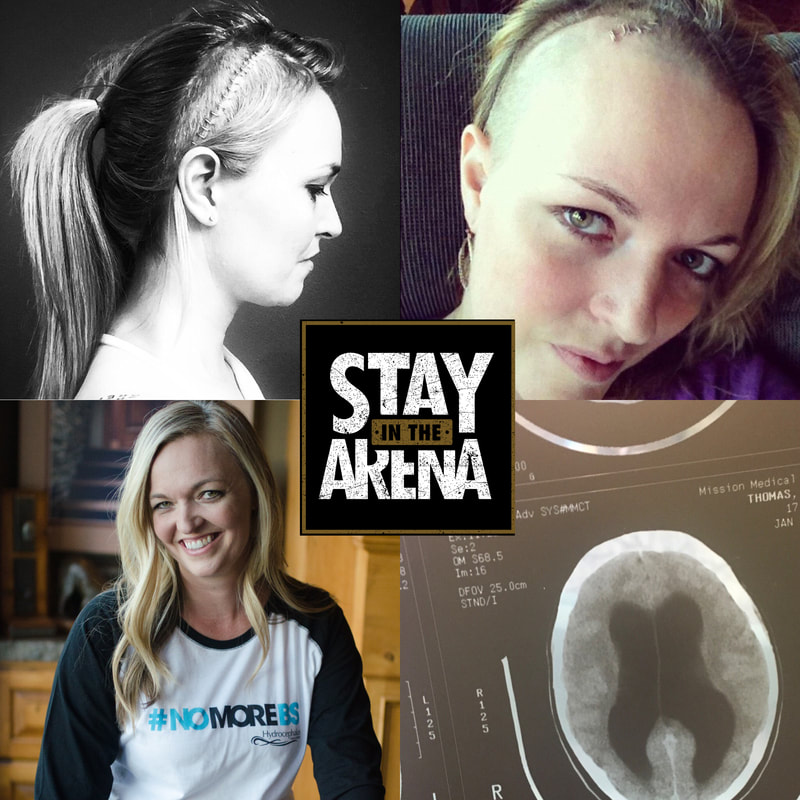 In January of 2016, I wrote a blog post titled “When are they going to get this thing figured out??” I had just established my website the month before and I had no idea how much sharing that one piece of writing would change my life. At the time, I was recovering from back-to-back shunt surgeries, and I posted it primarily to answer the common questions about hydrocephalus that I received from my own family and friends. But it was also a bit of a personal rant… the things I needed to say, in my own plain-English, non-technical words, to help me process what I was going through. Perhaps, because of that rawness, it definitely hit a chord in the community – with literally hundreds of people contacting me and messaging me. And since that initial post, I have reposted it every time I have had another brain surgery. Over the past two years, it’s been shared all over the internet, and read more than 20,000 times total. This week, I will be undergoing another shunt revision surgery – my 21st brain surgery. As shocking as that is for my family and friends, it’s not shocking for many people in the hydrocephalus community, who have walked a parallel path. While I am certainly hesitant and naturally apprehensive about going through this process again, I have complete confidence that my team has put incredible care into making this decision. And even though I’ve been really sick off and on all year and my pain is high, I’m physically and mentally strong right now, which I know will make a difference. I am well supported and we are focused. That original blog post is still very applicable today and I’m still humbled that it has touched so many people around the world. But today, I decided to do an updated version with the same concept. These are the 10 most common questions I get regarding my condition and these are my own raw, unfiltered responses to these questions. More or less, I wanted to answer these questions as if we were sitting together and you were asking them. I hope that in some way, by sharing these experiences and thoughts, I can provide you with some comfort and information. Knowing that there are others out there who are going through similar experiences is one of the most incredible things that the internet has the power to provide. And when you can get some positive input in regards to a very negative experience, it can truly change your path. That being said, I have to remind you that I am not a doctor or any type of medical professional, and this is not intended to be educational at all. It is simply my own answers, about my own diagnosis and experiences. As we move forward towards better answers for hydrocephalus, may we always remember that the credit belongs to the man who is actually in the arena, willing to stay, and battle – even when he fails again and again. May we band together in solidarity and strength, carrying those who need support, and remembering every day that the only thing that truly matters is human connection and trust. 1. What is hydrocephalus? Hydrocephalus is defined as an abnormal accumulation of cerebral spinal fluid (CSF) in the ventricles of the brain. When I explain it to people, I tell them that my brain does not drain spinal fluid properly. I developed obstructive hydrocephalus in my teens and was diagnosed at age 17. There is currently no cure for hydrocephalus and all treatment options include brain surgery. For more information, visit www.hydroassoc.org 2. Why have you had so many surgeries? The most common way to treat hydrocephalus is with a shunt, which is a valve and catheter system that diverts the fluid from the brain where it has built up and deposits it elsewhere in your body, where it can be absorbed. Hydrocephalus is shockingly common – even though many people have never heard of it. In the United States alone, there is a hydrocephalus related surgery every 15 minutes and it is the leading cause of pediatric brain surgeries. While some patients are able to go many years without trouble with their shunt system, statistically, 50% of all shunts fail in the first two years. That being said, there are a lot of us that have a really hard time with our shunts – the only way to fix them or replace parts is brain surgery. Click here for more information on my medical story. 3. Why don’t the surgeries work? Honestly, this is a frustrating mystery and I think every neurosurgeon in America would tell you that. Again, I am not qualified to answer this question, but there are many reasons a shunt (or ETV) will fail. They occlude (clog), the catheters get brittle and break, they come unhooked, etc. I have averaged 3-4 shunt surgeries a year for the past several years – until this last one, which lasted almost one year. 4. Who is involved in your care? I have been absolutely blessed and have put together an incredible team of physicians and therapists over the years. Of course I have a neurosurgeon, a primary care physician, and a pain management doctor. In addition to that, I have a strength coach that is very involved in my care, and a mental coach. When people ask me about how I manage my hydrocephalus, I tell them it takes a village. I have more information on the Resources page of my website, as well as the Hydro Treatments & Therapies page. 5. How do they decide to do another brain surgery? My neurosurgeon makes the decision to operate only when he feels like that is the only remaining option. He has been my surgeon for a number of years and he knows me very well. I feel like this has always been an advantage for me, because he knows what I function and look like when I’m doing well, versus when I am having serious issues. From time to time, he has consulted other neurosurgeons to look at my case and I always appreciate how thorough he has been. In my opinion, the most crucial decision you make is to establish care with a neurosurgeon who is a good fit for you. I personally travel 3 hours from where I live to see mine, because he is someone I trust and can communicate with. It has made all the difference in the world for me. 6. Is a shunt the only option for treatment? Some patients are candidates for a procedure called an Endoscopic Third Ventriculostomy (or ETV). Whether or not a neurosurgeon may decide to go with this option rather than a shunt, has to do with the patient, the neurosurgeon, and primarily the cause of the hydrocephalus that they have. It’s not an option for certain types of hydrocephalus. I had this surgery when I was 19 years old and while it is still viable today, my brain also needs a shunt to keep up. 7. How do you prepare for brain surgery (assuming it’s not an emergency surgery)? I try my best to prepare for surgery by getting things organized to the best of my ability. This includes unplugging from my job as much as possible, getting some good food options prepped, and making sure I have someone to stay with me during the process. In addition, I work on mentally preparing myself for the process, using visualization, meditation, and affirmation. It’s incredibly important for me to go into surgery feeling relaxed and confident in my team. There is always uncertainty with brain surgery and staying mentally in control of my thoughts and emotions are very important. 8. What are the concerns and risks? As with all surgical procedures, there are risks involved. The concerns can also change from surgery to surgery and from patient to patient. But in my case, there has always been a high level of concern about the risk of infection and seizures. I have had a lot of trouble with my head wounds sealing up as well, so there are concerns with wound infection. 9. What is the projected or estimated recovery time from your shunt revision surgeries? The correct answer to this question is that it’s different for every patient and for every surgery. I have had many shunt revision surgeries that have had similar recovery timelines, but then I’ve had others that have been much easier or much harder. That being said, in my own experience, I would say that my average recovery time to get back to 100% strength and energy is about 6 weeks. I am very physically active and I do my best to return to activity as soon as possible. I usually am off of work for about 4-5 days, then slowly integrate back into daily life. 10. How does this process affect the people who are close to you? I am incredibly fortunate and have an amazing network of family and friends that support me. I know that it is frustrating and painful for them to watch me go through the repeated surgeries and the chronic pain issues that come along with them, but I am thankful beyond words that they choose to walk beside me on this path. In my life, I see that as one of the blessings I have received and that I never take for granted. As a family, as a tribe, and as a team, we go through all of this together. We win and we lose together. In my blogging, I often use the hashtag #we. This is because when I speak of my journey, I use the term “we” as an authentic representation of the fact that I don’t do this alone. I walk this road with the most brilliant and loyal humans, and I am grateful. To my Loves: We are ready. We fight. We love. We stay in the arena. Here’s to the relentless pursuit of everything important. Thank you for holding my head and my heart. Peace, Amy 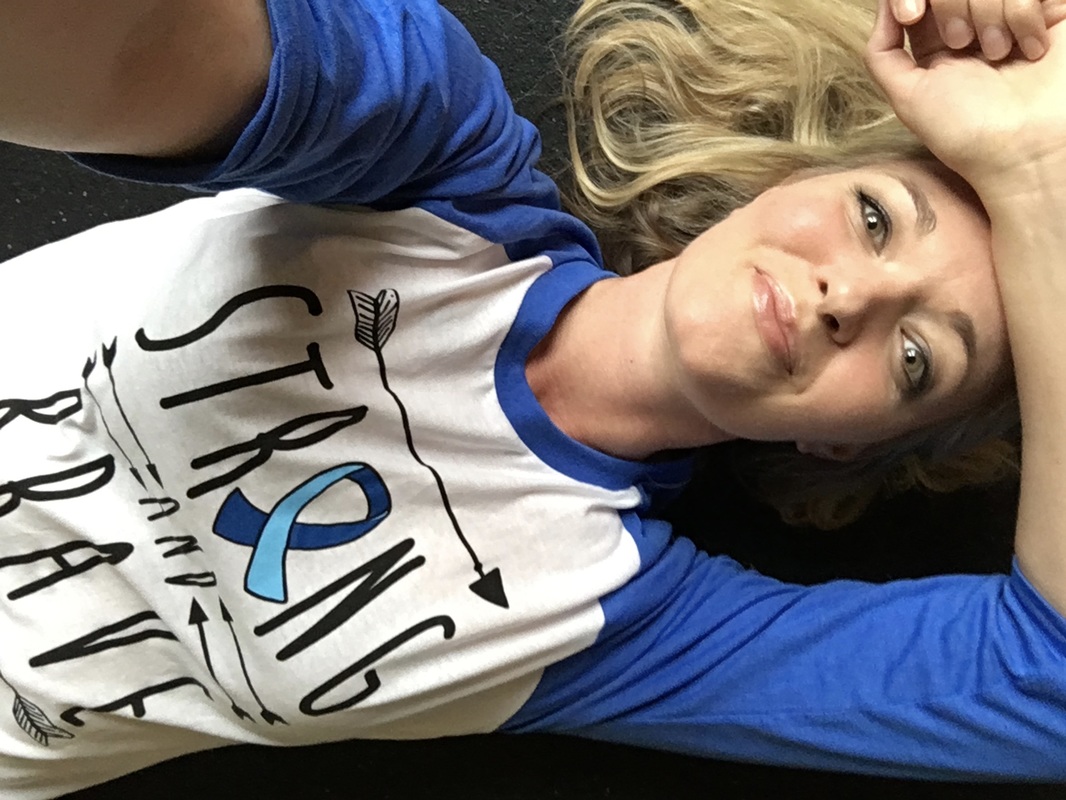 Fear, to a great extent, is born of a story we tell ourselves, and so I chose to tell myself a different story from the one women are told. I decided I was safe. I was strong. I was brave. That nothing could vanquish me. Insisting on this story was a form of mind control, but for the most part, it worked. Every time I felt something horrible cohering in my imagination, I pushed it away. I simply did not let myself become afraid. Fear begets fear. Power begets power. I willed myself to beget power. And it wasn’t long before I actually wasn’t afraid.
Recently I’ve received several messages from parents of kids or babies with hydrocephalus, asking if I have any advice for how to proceed and support their children, with all the uncertainty and challenge that lay ahead. This question is one that I get often. I usually point people to my website, where they can read more about my story and the various treatments that we use to manage my health, and where I often blog about the emotional and mental toll that this condition can have on the patient, and everyone involved. But the best advice I have to offer is to not be afraid. Don’t be afraid to ask questions. They say that nobody has ever died from being too curious. Understanding that hydrocephalus is a complicated and totally frustrating condition to treat, approach your doctors with questions that clarify what their game plan is. Even if there is no clear answer to what’s going on during a time of illness (because that is often the case, unfortunately), knowing what the potential timelines and possible treatment paths will be will help you to prepare, and feel more at ease. Don’t be afraid to know as much as you possibly can about hydrocephalus, even if it’s overwhelming. Knowledge is powerful, and learning could lead you to a path of treatment that could change your life. Don’t be afraid to keep searching until you find a team of medical professionals that you can trust and communicate with. I learned this from my parents, who have always pushed for the absolute best in medical care for myself and my sisters. If you see a physician, and feel that they aren’t a good fit for you, just keep looking. Life with hydrocephalus is a long and winding road, and you are going to be in it for the long haul with your doctors and therapists. Even if you don’t have a lot of complications, it’s important to have that team assembled and established, just in case things change. Don’t be afraid of brain surgery. The alternative of being sick with a malfunctioning shunt (or worse) is much harder than healing from surgery. This is something I tell parents over and over again. It’s really hard when your child is young, and/or non-verbal, to understand what they are going through medically when the shunt isn’t working properly. Guilt and overwhelming sadness creep in as the word “surgery” enters the discussions. But never make decisions about surgery based on fear. Relief is so precious, and life is just on the other side of that difficult decision. Don’t be afraid to work at being healthy in every way you possibly can. My team and I preach this multi-disciplinary care approach to wellness, and I do my best to lead by example. Work at the mental and emotional battle as well, and seek help in this area if you need to (this goes for both patients and caregivers). Exercise, various therapies, diet, and lifestyle will not cure your hydrocephalus, but can greatly improve your overall quality of life. Don’t be afraid to live and love between the madness. Make goals and push to achieve them. Work and enjoy your career, if you are able. Love your friends and family, and those in your support system. Let your life be an example of rising above the challenge, without hydrocephalus becoming your only identity. And don’t be afraid of what lies ahead. All we ever have is the present moment. Seize it and feel every emotion, sensation, and minute that passes, good or bad. We only have to live each difficult moment once, but we also only get one shot at all of the beautiful moments in life. Stay present. And don’t let fear define your journey. Stay in the arena, Amy 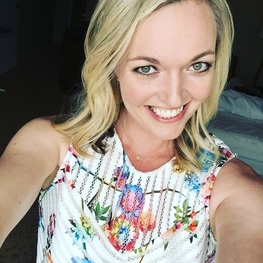 June 16-19th, 2016, hydrocephalus patients, surgeons, doctors, researchers, and industry professionals from all over the world gathered in Minneapolis, MN for the 14th National Conference on Hydrocephalus. The Hydrocephalus Association (HA) put together an inspiring and informative set of classes and content, including several new topics and fields of study. Leading up to the event, I received a lot of messages and questions about whether it would be live streamed, or if there would be a way to access the talks via the internet. This year, the HA took a big leap, and offered a way for people to attend the conference online - and they had a good number of people take advantage of this virtual attendance opportunity. If you missed out on that, there are still a handful of the sessions that you can stream from their website, for free. If you can, please take the time to send a quick message to the HA to let them know that we appreciate the effort spent on providing this online content. It is very important for them to receive the positive feedback. I told you all that I would do a “post conference review” on the blog, so I wanted to re-cap a few of the highlights of my week in Minneapolis. I wish I could write down every experience for you, and summarize every single class/session. I had an amazing time, and made so many great connections with other patients and participants. Going into the conference, I knew that there would be a lot of people there that knew who I was, and knew my story because of my blogging. However, I didn’t expect that it would be so emotional meeting these people, especially parents of young children with hydrocephalus. Seeing these parents (and kids) in person was a good reminder of why I am doing this, and why the choice to put my life on a public stage is worth the vulnerability and pain. The mutual support and inspiration that we can bring to each other through simple connection and words of encouragement is invaluable when your life is continually turned upside down by hydrocephalus. The week was filled with tearful hugs and lots of photo opportunities. My blogging started on social media (Instagram), and at the conference I had the opportunity to meet with a couple of people who I’ve communicated with regularly for several years - Trine from Denmark, and Erin from Canada. It was incredible to have these face to face encounters after supporting each other from afar for so long… a perfect example of how the internet has incredible power to connect people. The conference started with a breakout session of Community Connections - which is where patients and family members are grouped by age and family relation, so they can connect with other attendees who are in a similar situation. I attended the group session for Adults Diagnosed in Young & Middle Age, where each person in a circle of 12-15 people shared their different circumstances and struggles, but found comfort in the common thread that weaves us all together. It was a great way to start the conference week, especially for first timers. Taurean Nixon, cornerback for the Super Bowl champion Denver Broncos, was the inspirational keynote speaker at the conference. Taurean has a younger brother who has hydrocephalus, who he is very close to. His story and drive to succeed in life to honor his little brother’s battle, was touching and inspiring. His road on and off the football field has been filled with ups and downs and incredible challenge, but his attitude is the true personification of relentless pursuit. Since I have siblings with physical and mental challenges as well, so much of what he had to say about family really resonated with me, and I am so glad we had the chance to meet. Taurean Nixon is the real deal, and has the capability of changing so many lives with his kindness and desire to reach out to people who are suffering. On Friday, I participated in a panel discussion on the transition from youth into adulthood, as it pertains to medical care and life in general. Dr. Michael Williams of the University of Washington moderated the discussion, which covered everything from finding an adult neurosurgeon after years of pediatric care, to making life/career plans, and communicating with doctors, parents and caretakers. The discussion was very well received, and I was very proud of our whole panel, which included a parent of a hydro patient in college, a high school student, a student recently graduated from high school, and a college student. (For more information on this topic, see my previous blog post on this subject) I was really encouraged by two things at this year’s conference. First, I felt like there was a greater focus on integrative care for headaches and chronic pain, with a class that presented alternative methods for treating pain, and several sessions that touched on the mental/emotional aspect of pain and chronic illness. In the past few years, my husband and I have taken a multi-disciplinary approach to my care, and believe it’s been a big part of my success. The class on alternative methods for treating chronic headache, taught by Scott Schwantes, MD. included one of the best explanations of chronic pain that I have ever seen or heard. Dr. Schwantes showed a graphic depicting the pattern of chronic pain, that includes the trauma and the resulting cycle of pain that is fed by many factors, and creates it’s own patterns within the nervous system. It’s something I have experienced myself, and I found it to be very interesting. The second thing that was inspiring and encouraging to me was the new research on shunt failure that is being done in the United States. I had the pleasure of meeting and getting to know Dr. Carolyn Harris, PhD. from Wayne State University, who is doing a fascinating study on why shunts occlude. Seeing the slides she had with the different types of cells attaching to the shunt valves and tubing, gave a new perspective and reality to the fact that there are still so many aspects of hydrocephalus that are unknown and misunderstood. Until we have the information we need on what is happening, there will remain a lack of new treatments and solutions to the same issues that continue to plague us as patients, causing repeated surgeries. You can help! Dr. Harris is collecting shunts (all parts) that are removed from patients, for her study. She needs as many shunt parts as she can get, to expand her research. If you are going to have a surgery, and you think your neurosurgeon would be willing to save the parts for her, please contact her at [email protected] to get instructions on how to contribute. One of my favorite parts of the conference is always the Dinner Dance & Talent Show that happens on Saturday night. My heart swells with pride, as kids of all ages get up to dance, sing, and perform in front of a loving and supportive audience. It’s truly beautiful to see them smiling and laughing, feeling comfortable in their own skin, safely surrounded by others who understand their battle. On Sunday, we wrapped things up with an intergenerational panel discussion entitled “A Patients Guide to Thriving”. Once again, I was honored to be asked to speak on my experiences. Especially since I was only about three weeks post-op, sharing my story brought up how blessed I am to have the support that I receive from my husband, family, and friends, as well as my medical team. As I answered the questions and looked out into the audience, I encouraged my fellow attendees to look around at the people who stand in battle with them every day, and to recognize the sacrifice and commitment that those people have made to stay in the trenches beside them. This inner circle of people in my life are the reason I am able to thrive. Whether I am struggling through a shunt failure and feel like I want to quit, or I’m flying through a surgery and making it look easy, I thrive because they have made me physically strong and emotionally safe. As my life continues to change, and my journey has become so public, I cherish this security, and will do whatever is necessary to protect these bonds. These are the people who see the real pain, who pull me through the difficult moments that aren’t depicted on social media, and who hold me in the dark. But most of all, these are the faithful souls who are experiencing this life with me - who feel a pain of their own, physically and mentally, every time we go through another chapter. And for that commitment, I owe my life. I hope to see you at the next National Conference on Hydrocephalus, in 2018. Be well, and stay in the arena. Am 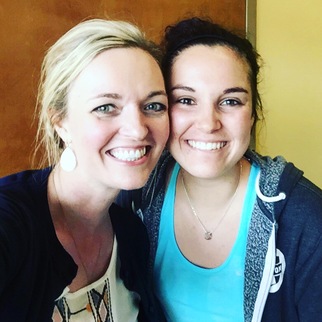 Next week, I will be speaking at the 2016 National Conference on Hydrocephalus, an event put on by the Hydrocephalus Association. I’m so excited and honored. In addition to participating in a few other aspects of the conference, I have been asked to join a panel discussion on the challenges that hydrocephalus patients face when transitioning from youth into adulthood. The years in which a child becomes an adult bring so many changes - not only in medical care, but sometimes in living situations, schooling, relationships, and/or jobs and career planning. Over the past few years I’ve had the pleasure of connecting with many parents of children with hydro, and I recognize that one of my primary roles in this community has been to encourage many moms and dads, who worry about what their little one’s adult life might look like. Even though there are a lot of “high functioning” adults with hydrocephalus out there, I think people have gravitated towards my husband and I because we are active and positive, and very open with my story. Despite the fact that we have had a rough road with my shunt over the past several years, we keep working hard at keeping me healthy and happy. Don’t get me wrong; we are human, and have many frustrations and heartbreak. But we remain a united front, and we refuse to be complacent - instead we take an active and aggressive role in my care, and that has worked well for us. Since the Hydrocephalus Association approached me with this speaking topic, I have spent a good deal of time reflecting on my own path. For those of you who aren’t able to attend the conference, I wanted to share a bit of my story, and a few of my thoughts on the subject of transitioning from youth into adulthood with hydrocephalus. MY STORY I grew up in a large family. I’m the second born of seven children. My parents are healthy, but in addition to my hydrocephalus, I have two sisters with juvenile rheumatoid arthritis, which is a devastating illness, as well as a sister who is mentally delayed. My sister Lisa was very sick from birth, and has spent her entire life battling her condition (arthritis) every day, which is very debilitating. As she grew, I watched my parents advocate for her not only medically, but also in school, hobbies, and in life. They relentlessly sought out and tried all types of therapies, searching for solutions for her pain and ways to help her have better function. Most importantly, they never let her believe that she was not going to be able to be a fully functioning member of society. As a result, she grew up to be a confident, social, smart, and beautiful human being. Despite spending at least half of her junior high and high school years laid up in bed recovering from various joint surgeries, she not only finished high school, but she finished at the top of her class - valedictorian. As an adult, she lives independently, owns a home, and has a very successful career. She is my inspiration every day - and the example she sets keeps me moving forward. I’m thankful to my parents for showing me by example how to gracefully navigate life with medical challenges. I was diagnosed with hydrocephalus at age seventeen, so I had fully grown and developed before it was discovered. The hydro had gone undetected for an unknown length of time, but it was suspected that it was years, based on the severity at the time of discovery, and the size of my ventricles. (*See “My Story” page for more information on my medical history) As a healthy and active teen who had never had a major illness or medical event, I was instantly thrown into the world of CT scans and MRI’s, hospitals, and ultimately, brain surgery. My entire life was put on hold until further notice, including schooling. Not only did I have to take some time off from high school, but college was indefinitely put off, until my health could stabilize. I was an excellent student and a champion fiddle player, with aspirations to become a professional musician, so I was devastated and totally lost as I tried to grasp the fact that life had just been ripped out from under me. Just like they had with Lisa, my parents flew into action, and got me the best medical care they could find. When things didn't work out with one neurosurgeon, we got different one. When I kept suffering from epic shunt failures, they looked for another option, and we found a surgeon who would perform an ETV surgery for me. They stayed positive, and they were always encouraging. But most importantly, they refused to let me wallow in self pity and doubt regarding the whole situation. Instead, I participated in my doctor’s visits, was expected to speak up and answer questions, communicate with my medical team, and make alternative plans for the years that followed high school. If it wasn’t safe for me to move away to college (or Nashville), I was to find a job and start living my life as if it was moving forward. I am forever grateful for the high expectations that were placed on my shoulders, and for the big push in the right direction…. because it made me who I am today. Ultimately, it also gave me better coping skills, and shaped the way I manage my hydrocephalus as an adult. My husband Clifton and I have a mission statement; to live in relentless pursuit of everything that’s important. In life, anything you want to accomplish will take a certain dogged determination. This includes love, health, career, and relationships. If you aren’t willing to throw yourself at a goal with reckless abandon, you may never see the full potential of what you desire. As a mentor to young girls who have hydrocephalus, I’ve had this conversation over and over again. There are many paths that lead to success in life. One person’s version of success might be completely different than another’s, but they will take equal relentless effort to achieve. MY ADVICE ON TRANSITIONING:
I get a lot of questions regarding intimate relationships/boyfriends/girlfriends - because these transitioning years is the time period that those things start to get serious! The advice that I can offer in this department is as follows:
In closing…. Hydrocephalus often leads us down a very difficult road, but love and life are well worth the battle - and it’s our choice to keep the wheels turning. If you have goals, believe in yourself - that you can and will do whatever it may takes to reach that success. If you are willing to work towards these goals in relentless pursuit, I BELIEVE IN YOU. I believe that you will persevere, overcome obstacles, and be the best version of yourself. #stayinthearena All my best, Amy Photo: Lauren Rodrigues, one of my hydro girls, and I - Lauren is currently in her freshman year of college, and just got into nursing school! Last Thursday morning, I was sitting in an early morning meeting at work, and suddenly, my phone started going crazy - buzzing with multiple notifications at a time, and continued for about 10-15 minutes. When the meeting had finished, I took a look at what all the commotion was about, and I smiled. The Hydrocephalus Association had officially announced on social media that I have been asked to speak at the upcoming 2016 National Conference on Hydrocephalus, in Minneapolis in June. Judging by the constant stream of notifications, messages, text, and emails, people were pretty excited! It's a huge honor to join the staff and all of the other inspiring speakers, and to continue to have the opportunity to connect with other people who are navigating life with this condition. I am humbled and a tiny bit overwhelmed by all the outpouring of love and support. And I am thankful for the opportunity to meet so many of you in person.
Registration is now open! There are many options for attendance, and even some financial assistance available. The conference is held every two years, and the location rotates from east coast, west coast, and middle of the country. If you are somewhere in the middle of the states or Canada, this might be the closest it comes to you for a while. Clifton and I were blessed to attend the last conference when it was really close to where we live, and that experience had a lasting impact on me. Seeing all of the children and meeting other hydrocephalus patients in person changed my life, and is one of the main reasons we are doing the advocacy work that we are doing now. http://www.hydroassoc.org/conference-registration-is-open/ Since this announcement last week, I have had a few common questions:
Clifton and I wrote a short review of our experience at the 2014 Conference in Portland, and it's on the Association's blog, but I wanted to also share it here: http://www.hydroassoc.org/travelling-a-parallel-path/ Traveling a Parallel Path My name is Amy Booher, and my husband Clifton and I attended the 2014 National Conference on Hydrocephalus in Portland, Oregon. I was diagnosed with hydrocephalus at age 17, but this was our first time attending the conference. We were really excited to learn more about the available technologies and treatments, and connect with other families and patients with hydro. We had a fantastic experience, made new friends from all over the country, and were able to make face-to-face relationships with the staff of the Hydrocephalus Association. At the conference, we found a company that has an anti-siphon device that we had never seen before. After taking that information back to my neurosurgeon, I had one placed in my next surgery – something that has improved the quality of my life. In the past year, I have launched a website/blog about my journey living with hydrocephalus, and I am excited to share what I learn at this year’s conference with the people from all over the world who follow our story online. Above all, I feel that the most important aspect of this event is the opportunity to connect people who are all traveling a parallel path. Clifton and I especially enjoyed watching all of the kids that attended. Seeing them laughing and freely expressing themselves was so amazing. Daily life with hydrocephalus is challenging to navigate, and knowing that you are not alone is comforting. You can find more about our story on my website, www.amybooher.com or on Instagram @amy_booher. Here’s to another great conference, and here’s to the relentless pursuit of everything important. Clifton & Amy Booher Very few people are just born with the ability to bounce back from adversity, with relentless tenacity. To laugh in the face of challenge, and scoff at the idea of giving up. Instead, choosing love so hard and play with so much joy, that the world looks at them with a certain level of envy... despite the unbelievable circumstances they wake to every day.
My sister Lisa is one of those people. She is an absolute fucking champion. She wakes each day to reality and pain most of us would crumble beneath on our best day -- and smiles, laughs, loves, and gives - more than most of us do on our best day. She's never allowed her physical condition to hold her back from having beautiful relationships, crushing her goals, and just being a general all-around bad ass. When we were growing up, she was tiny. The juvenile rheumatoid arthritis that she was born with stunted her growth and twisted her fragile little body. I, on the other hand, was strong and tall. At 22 months younger than me, she was about half my size by the time we were in grade school. So, I carried her on my back, everywhere. To the school bus stop, at the grocery store, on field trips for school. Piggy back. It never crossed our minds that there was anything unusual about this. It was the easiest way to help her keep up with everyone, and keep her safe. At the time, it seemed totally natural for me to physically carry her. I could, so I did. Neither of us had any idea that inside my brain, something wasn't right, and that later on, at age 17, I would start my own physical battle. And Lisa might still have no idea that in the years that have passed since my diagnosis with hydrocephalus, it is she that has carried me - not physically, but mentally and emotionally. It is she who has taught me to fight like a girl, and to never give up. I think of her when I don't feel good, when I don't want to go to work, when I don't want to lift weights. Her tenacity to survive multiple joint replacements and reconstruction surgeries reminds me that this is totally doable, even when it sucks. It is her open heart and loving soul that has taught me to enjoy all the good things in life, and that sharing your life with other people can push them along in conquering their own struggles. Thanks for carrying me, Lis. You are my hero. My true relentless warrior. I love you more than peanut butter loves jelly. Am |
AuthorMy name is Amy but friends and family call me Am. I am a lover of dogs, good whiskey, and strength training. I'm a brain surgery survivor (x31), a fiddle player, a construction designer, and a boxing enthusiast. I have six real siblings, and five fake brothers. I love deeply, and consider my close friends to be family. Archives
February 2022
Categories
All
|

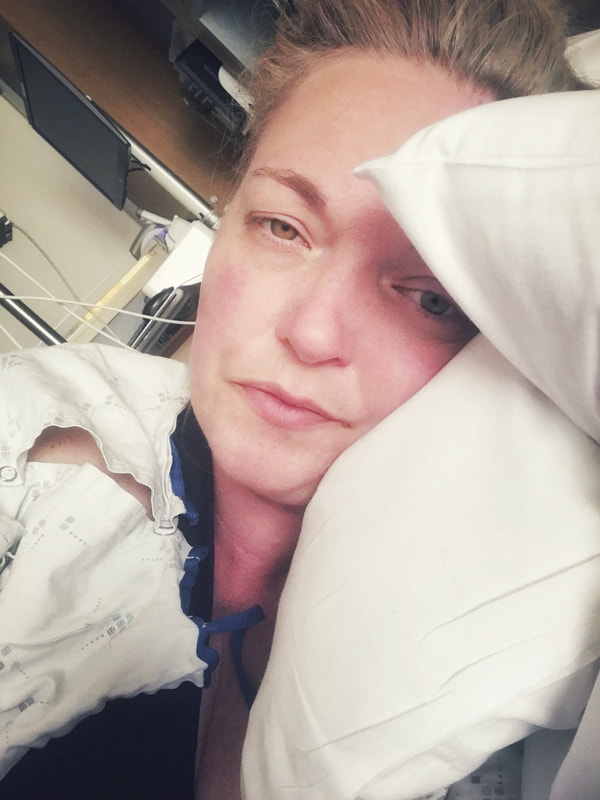
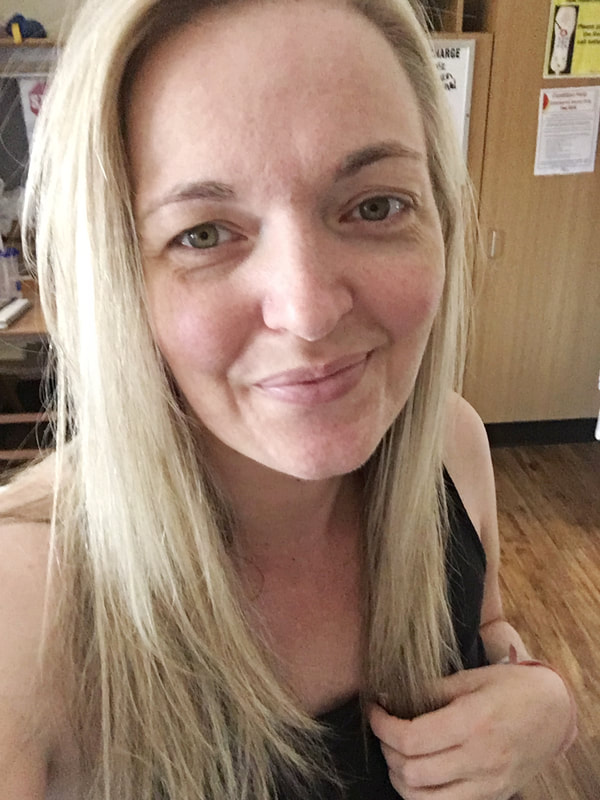
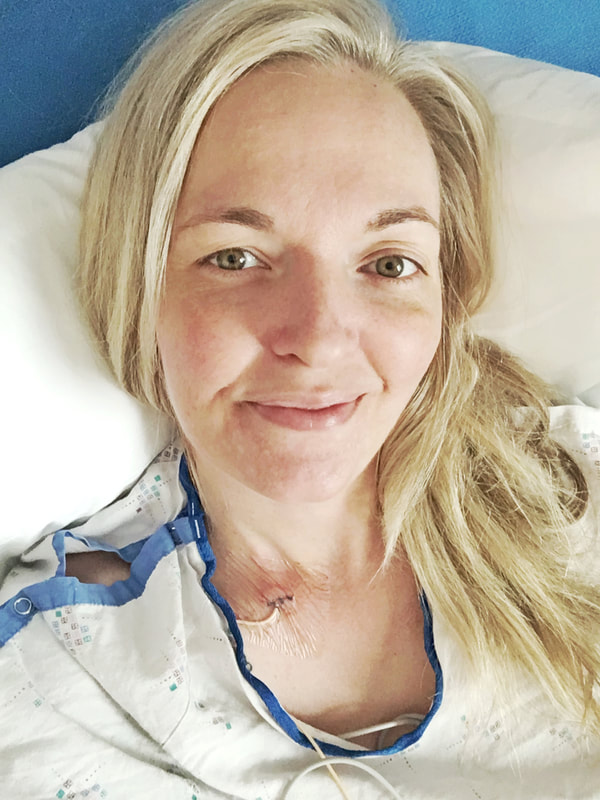
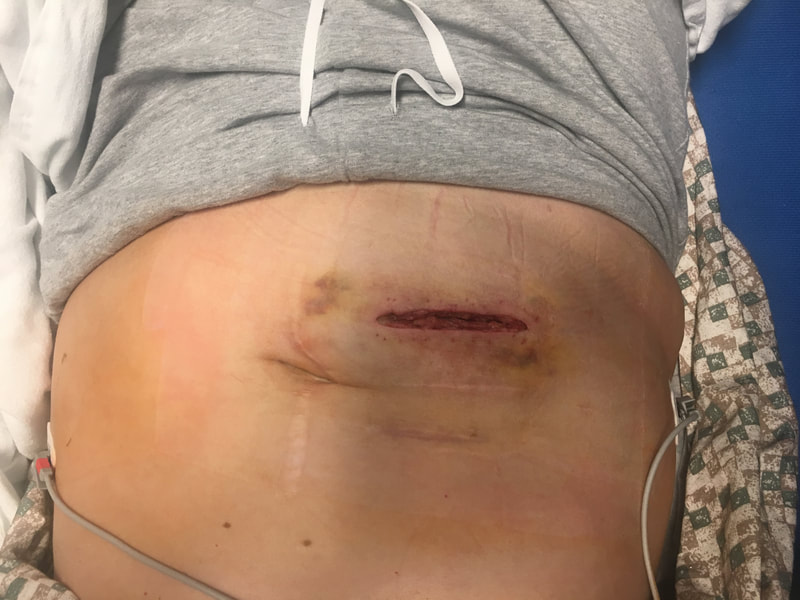
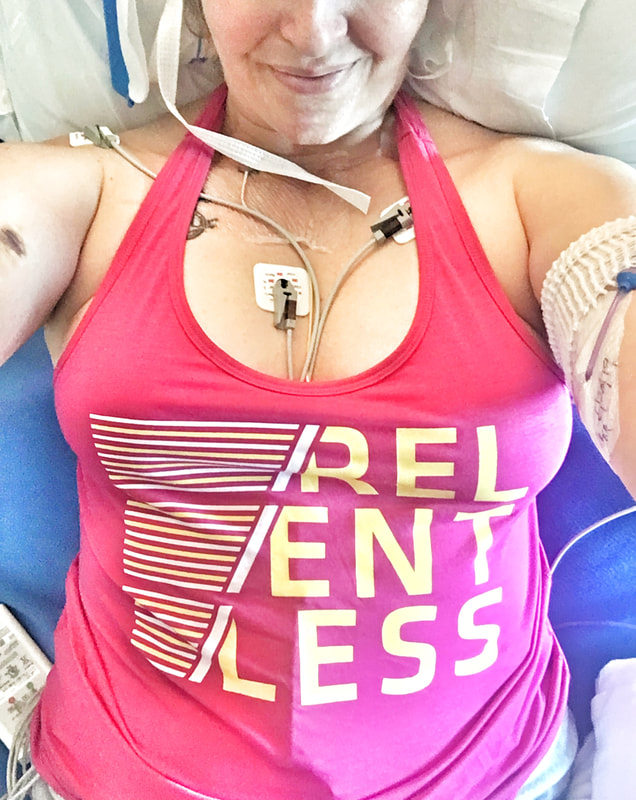
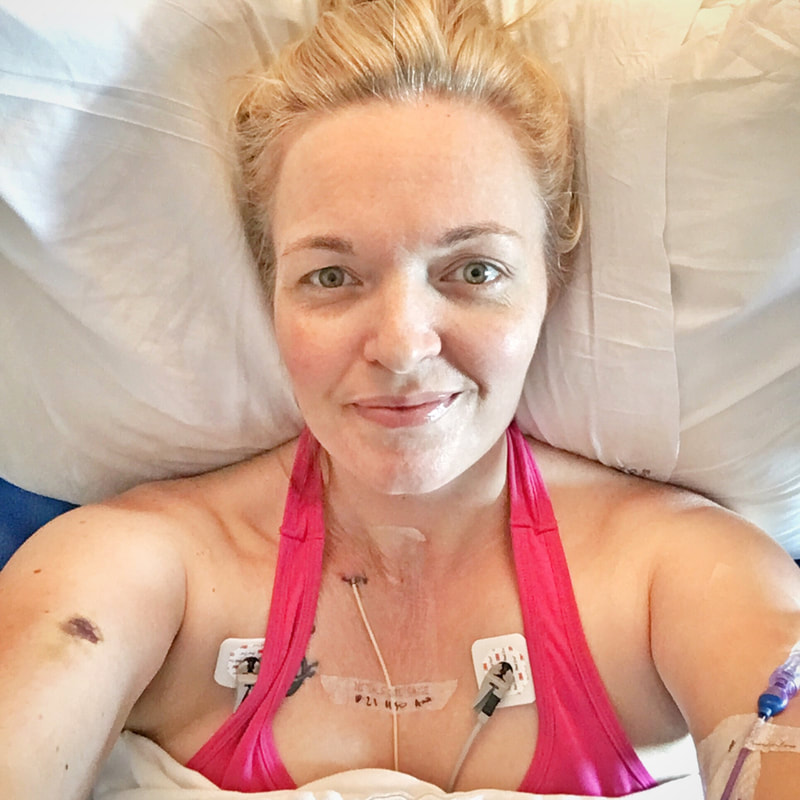
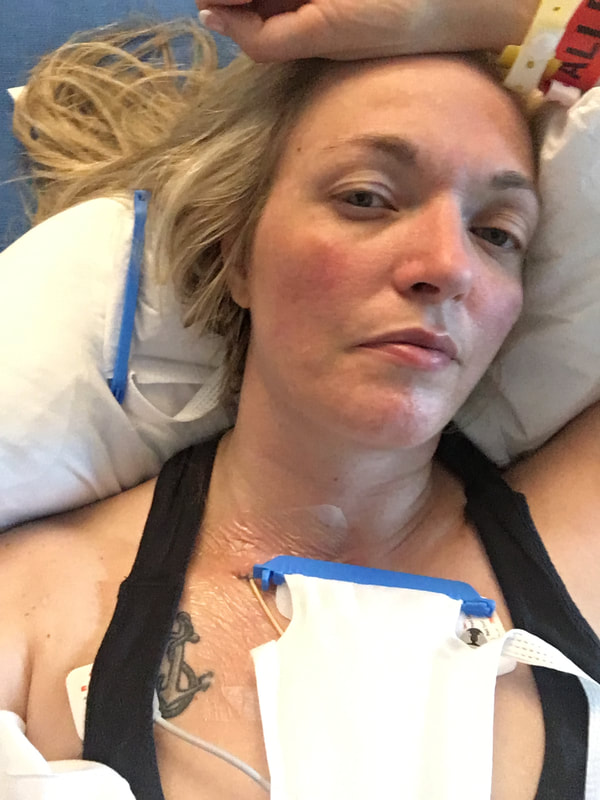
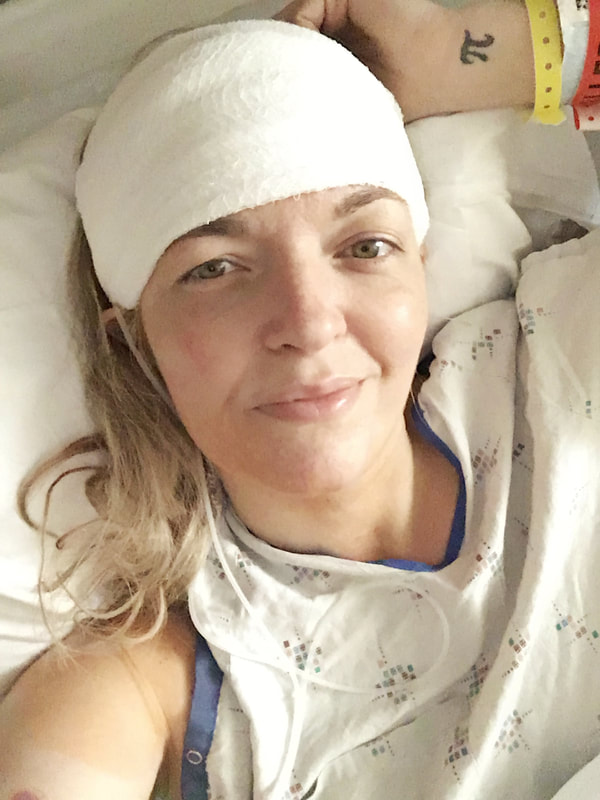
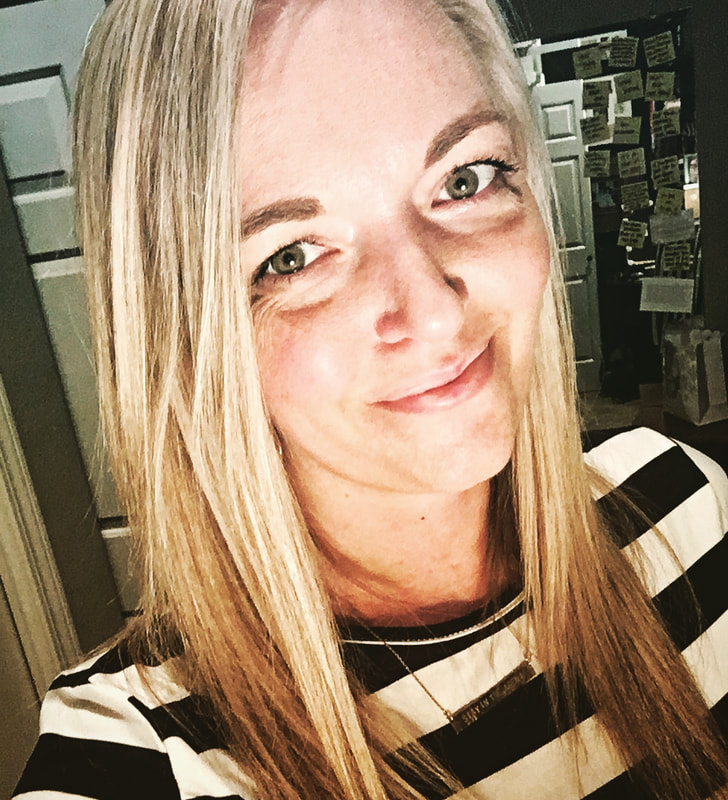
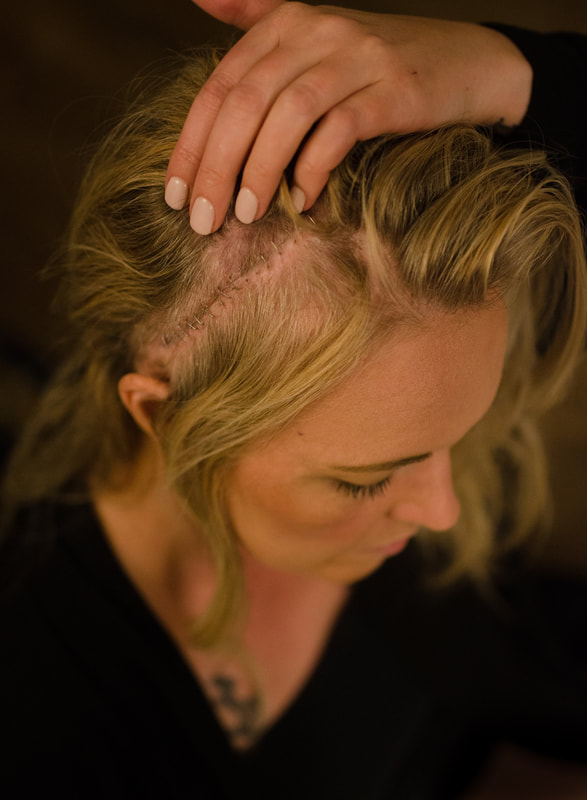
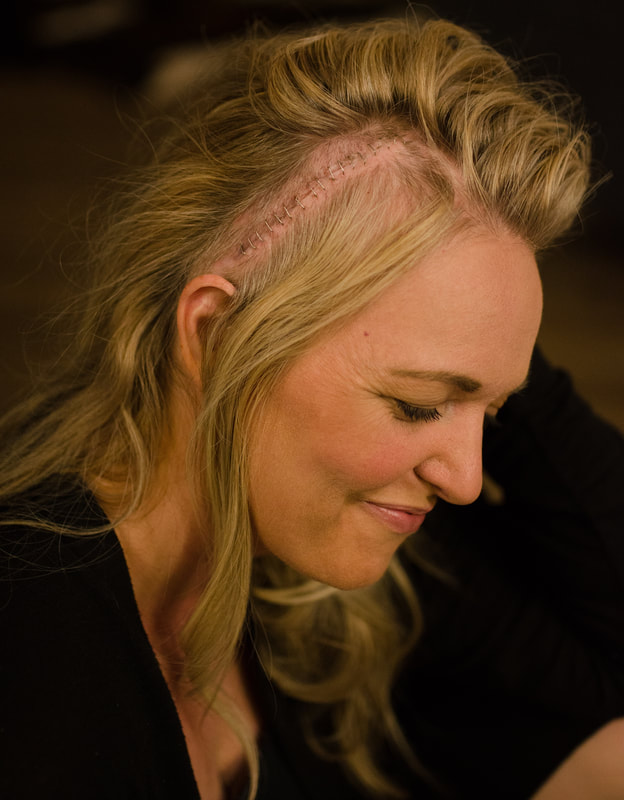
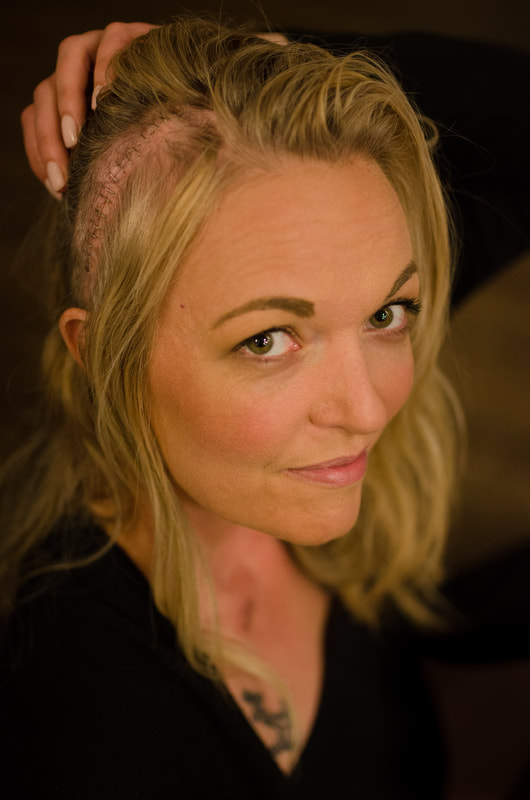

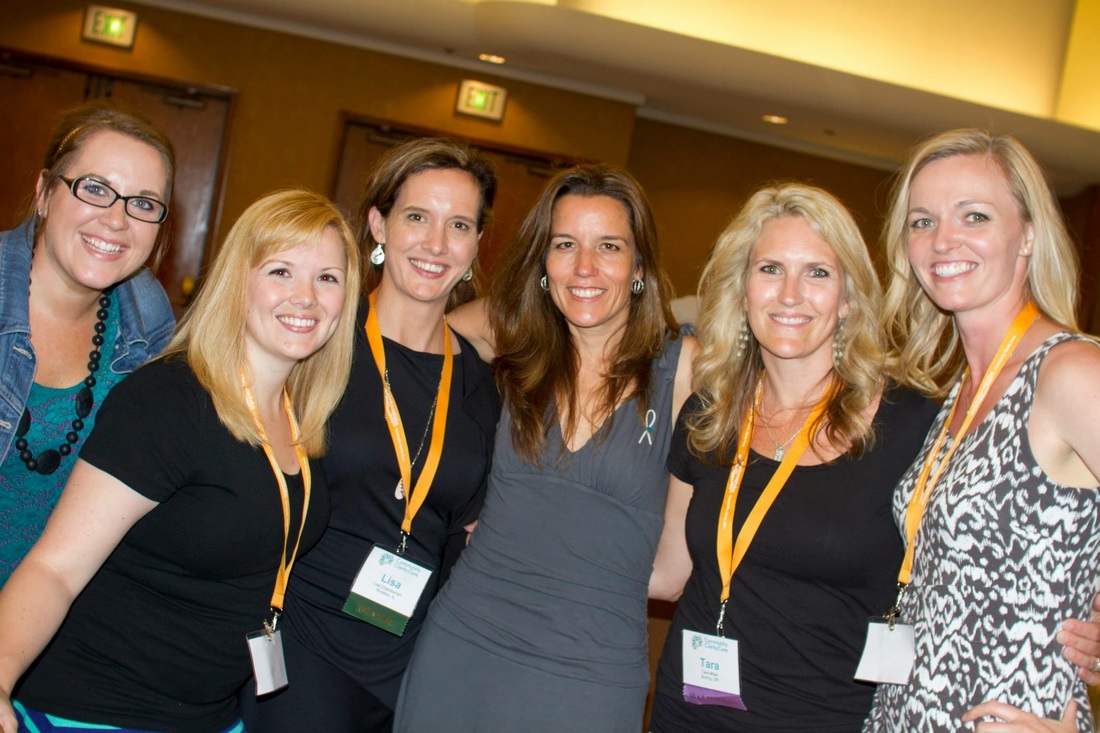
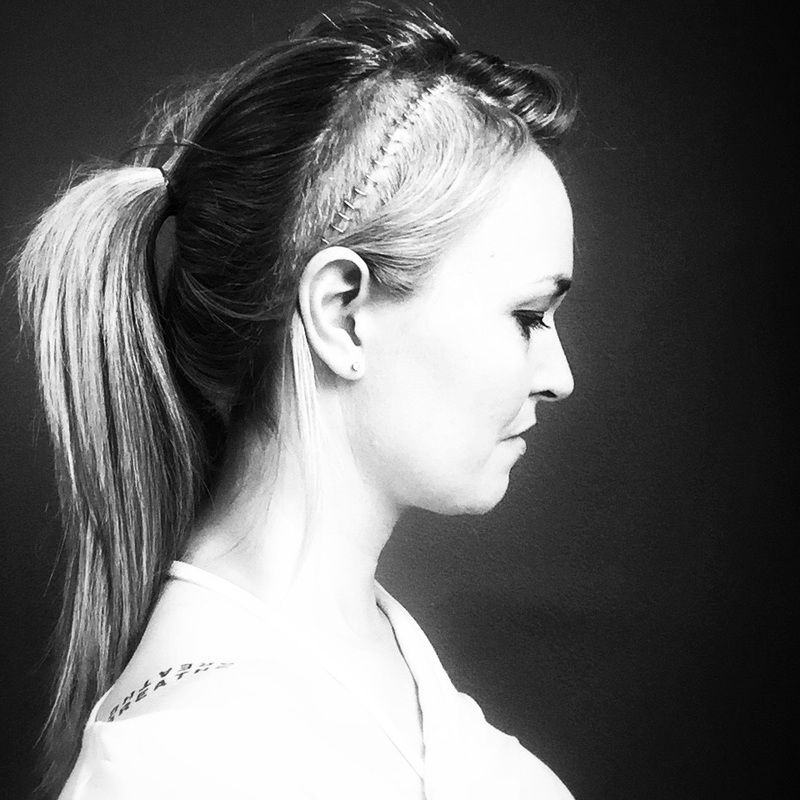
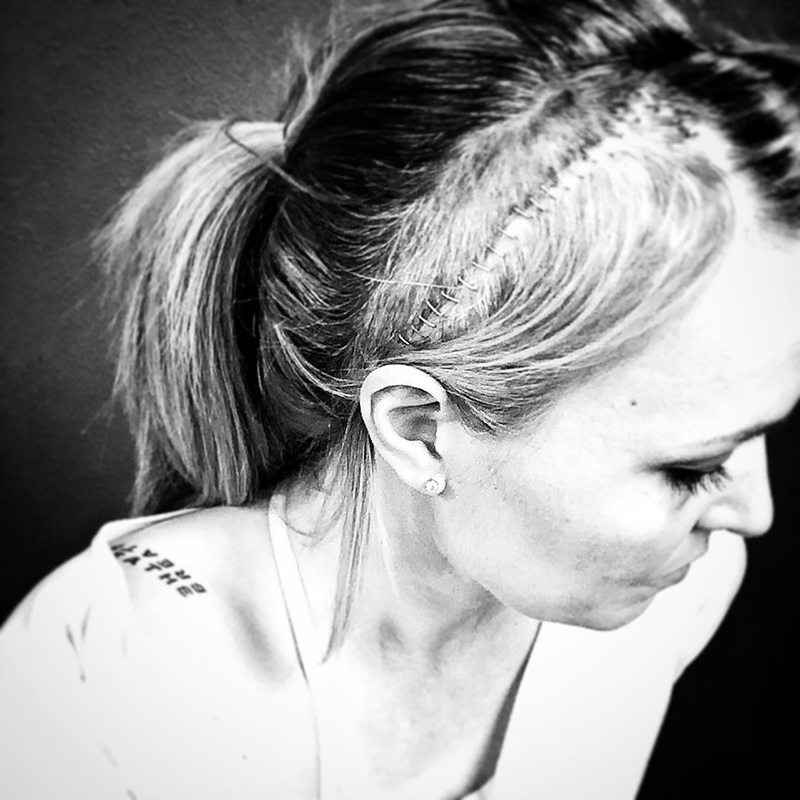
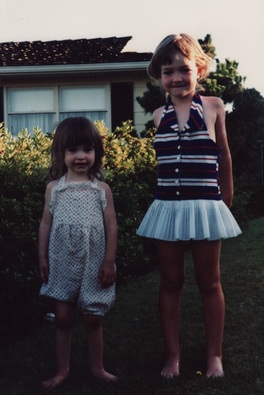
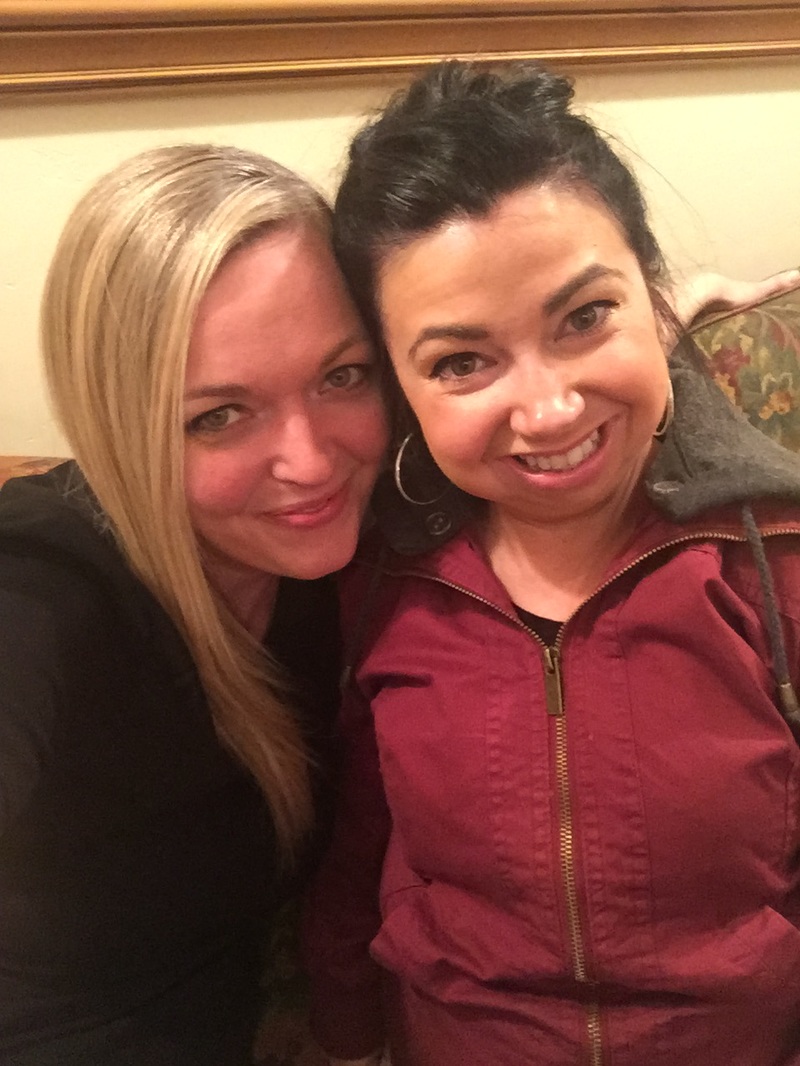
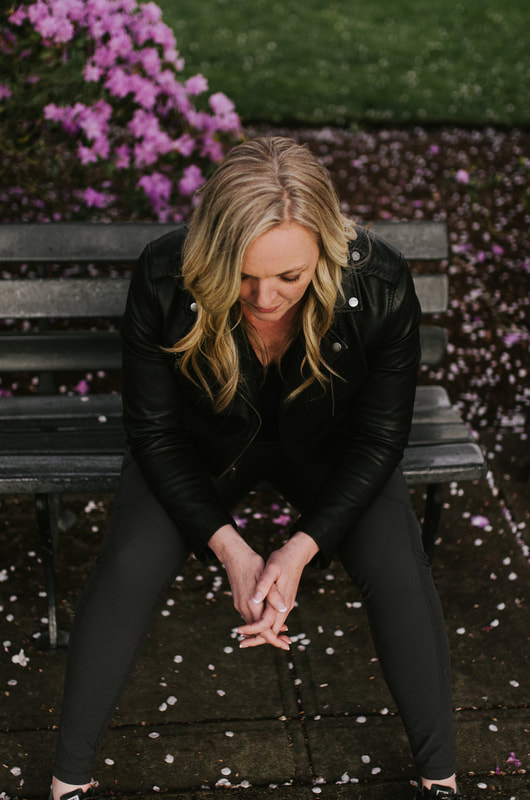
 RSS Feed
RSS Feed